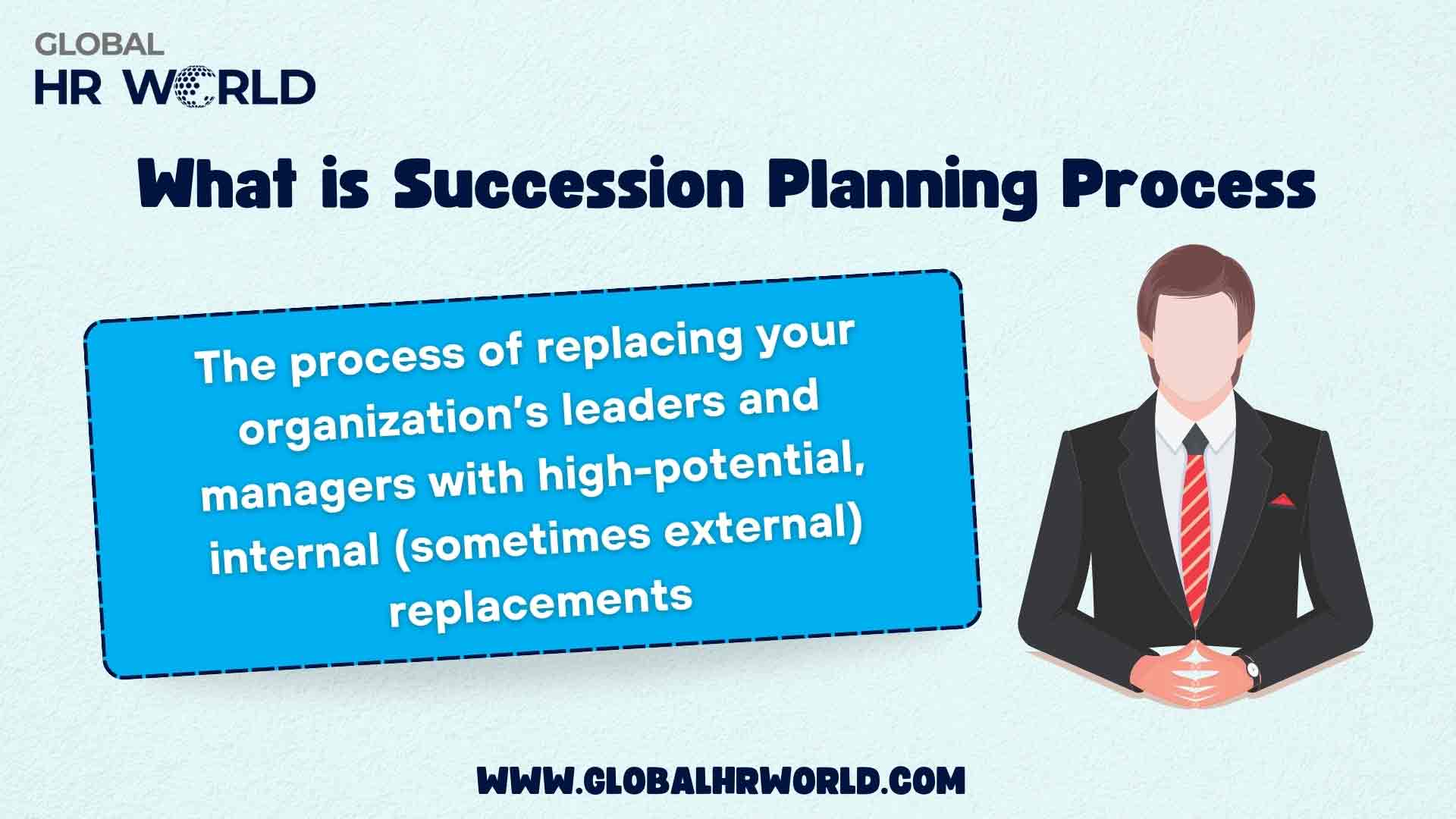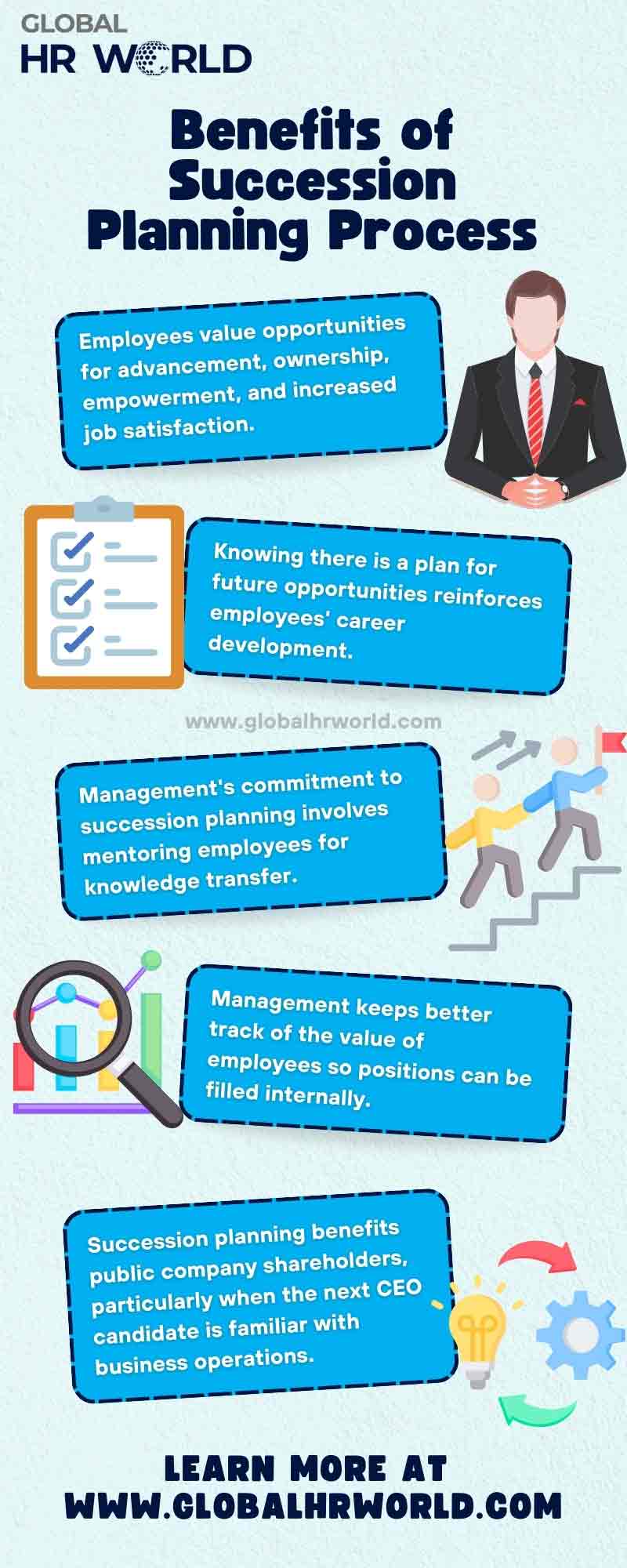A succession planning process is a necessary part of talent management. It is something you will appreciate having done, mainly when faced with a sudden, unexpected event. Though the process is not complicated at all, following these few steps to the succession planning process will make sure a better outcome.
Let’s begin!
What is a succession planning process?
Succession planning is the process of replacing your organization’s leaders and managers with high-potential, internal (sometimes external) replacements. It is about replacing a manager with someone prepared for the same role, with the potential for succession, who can transition into the position both quickly and successfully (with added emphasis on doing it successfully).

In the long term, succession planning strengthens the overall capability of the organization by,
- Pinpointing crucial roles and potential leadership gaps
- Identifying essential competencies for continuity if key managers/leaders resign or leave
- Documenting critical information to facilitate knowledge transfer
- Focusing on the development of individuals to meet future business needs.
HR is responsible for identifying potential successors within the organization. This involves not only recognizing existing high-potential employees but also ensuring that potential leaders are given opportunities to showcase their abilities.
Want to learn more? Keep reading!
Who should participate in the succession planning process?
Generally the succession planning team consists of the C-Suite – such as CEO, CFO, COO and heads of different departments, board of directors, and senior management, in addition to human resources (HRs). A succession planning process can be made specifically for finding successors for C-suite positions.
How to develop a succession planning process in your organization?
Every organization has its own people requirements and business goals. This means that each organization will have its own way of developing a succession planning process. However, there are a few basic steps that all succession plannings are built upon. If you are planning for your organization, you can follow with these steps and build a plan that aligns with your organization’s goals.

Let’s discuss the steps in detail.
Step no. 1 – Define the goals of your succession planning process
Succession plans need to have a clear goal or objective. The objectives you establish should also align with your organization’s mission and long-term vision statements, such as future leadership opportunities, internal talent development, diversity, and a pipeline of a team of leaders who can drive innovation and adapt to changing industry trends. Some common objectives can be:
- To find the right fit for middle-level leadership and managerial positions
- Making for future talent needs based on the organization’s growth and expansion plans
- To accommodate changing market scenarios
- To find replacements for retiring members of the board or to fill in new positions.
Step no. 2 – Analyze your current leadership situation
Once you have established the plan’s objectives and compiled a list of critical positions, the next step revolves around assessing the existing internal talent pool. During the evaluation process, you need to determine if your organization possesses the requisite individuals to take crucial roles/positions in the event of vacancies.
- Consider the strengths and weaknesses of your candidates to replace your leaders
- Assess whether they are prepared to assume their roles or if they require any further training or upskilling to ensure they are fully ready.
- Measure how your existing leaders’ goals/objectives align with the broader business goals
Step no. 3 – Identify the potential successors
Now that you have assessed the current leadership situation in your organization, you need to identify potential successors. This involves a systematic method to talent assessment and evaluation. This third step encompasses a thorough analysis of knowledge/skills, competencies, and leadership potential across various organizational levels. you can consider these strategies to pinpoint individuals ready to assume critical roles like talent mapping, performance review, succession readiness, etc.
Step no. 4 – Formulate a development plan for your successors
At this stage, building a tailored development plan for potential successors is important in their journey toward leadership roles. This outlines a structured roadmap for enhancing skills and fostering leadership growth. Things you need to provide include:
- Skill enhancement
- Mentorship opportunities
- Cross-functional exposure
- Self-management abilities
- Critical thinking approaches
Step no. 5 – Communicate the succession plan to stakeholders
Effective communication is very important when you want the successful implementation of your succession plan. To do so, you need to transparently share the plan’s details and benefits with the stakeholders to foster support and engagement among them. You need to explain the rationale behind the succession plan and its objectives with clarity. This establishes a clear context for everyone concerned. More so, in your organization, there must be open discussions involving existing leaders, potential successors, and HR teams. To do so, you need to encourage stakeholders to voice their questions, concerns, and expectations. However, there should be realistic expectations regarding the succession timeline, roles and responsibilities, and outcomes associated with the succession plan.
Step no. 6 – Regularly review and update the succession plan
To maintain the effectiveness of your succession planning process, engage in periodic reviews and revisions to assess the viability of planned changes and their readiness for implementation when required. You need to revisit the plan when selected successors depart, or new talent joins. For example, if the chosen successor leaves for any reason, reassess shortlisted candidates again and make a new selection. When a new employee joins, inspect their potential fit for the positions and incorporate them as potential successors.
Step no. 7 – Execute the succession plan
Once you have all the information you need, create an organizational chart detailing current managerial role holders and their potential successors and any anticipated new roles and associated personnel requirements. This blueprint provides the foundation of your succession planning process, serving as reference to track changes and revisions as the plan takes shape.
Here are a few tips to ensure a successful implementation:
- Integrate the succession plan’s core values into your organizational culture
- Integrate targeted leadership development training modules into your existing training and learning initiatives
- Implement a system of recognition or rewards that acknowledges the efforts of managers/leaders who actively contribute to mentoring
Step no. 8 – Document the transition
In this step you need to document outlining the key projects, responsibilities, and other details of succession planning process. This provides a structured approach or a standard operating procedure (SOP) for: handing over responsibilities. managing pending and future tasks. This SOP can be reapplied if needed again. You should maintain a transition file. It should contain all the information in detail you’d want them to know to make sure as smooth a transition as possible. if done right, this documentation should help them step into the required role with a minimum of disruption.
So, are you ready to foster change using the succession planning process? Comment us below with your final thoughts!
Infographic

Knowledge Check!
Frequently Asked Questions (FAQs)
What is a succession planning process?
Succession planning is the process of replacing your organization’s leaders and managers with high-potential, internal (sometimes external) replacements.
Who should participate in the succession planning process?
Generally the succession planning team consists of the C-Suite – such as CEO, CFO, COO and heads of different departments, board of directors, and senior management, in addition to human resources (HRs).
What are the 8 steps of the succession planning process?
The steps are,
Define the goals of your succession planning process
Analyze your current leadership situation
Identify the potential successors
Formulate a development plan for your successors
Communicate the succession plan to stakeholders
Regularly review and update the succession plan
Execute the succession plan
Document the transition



